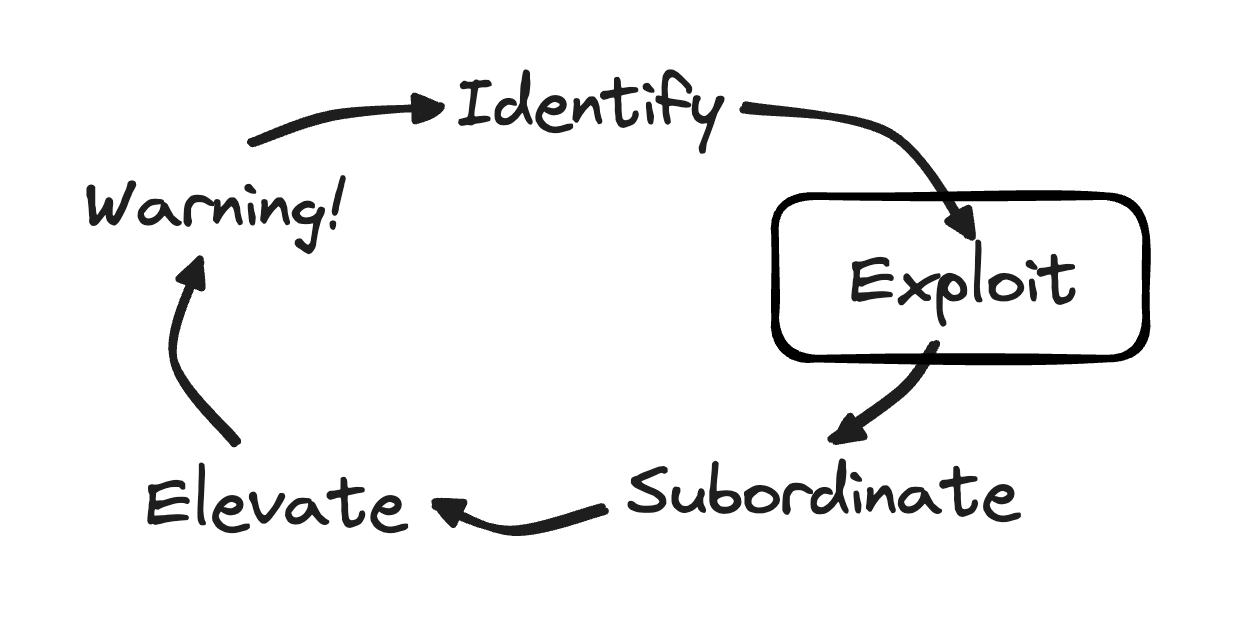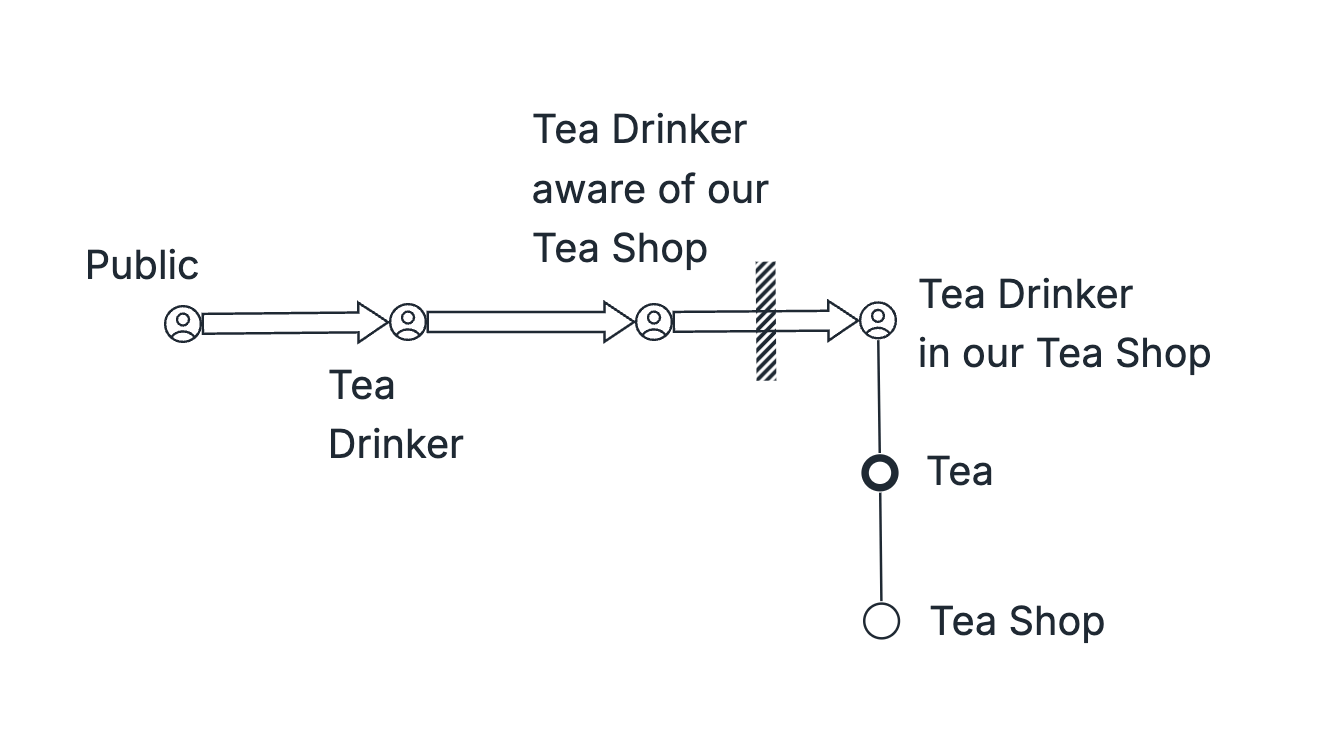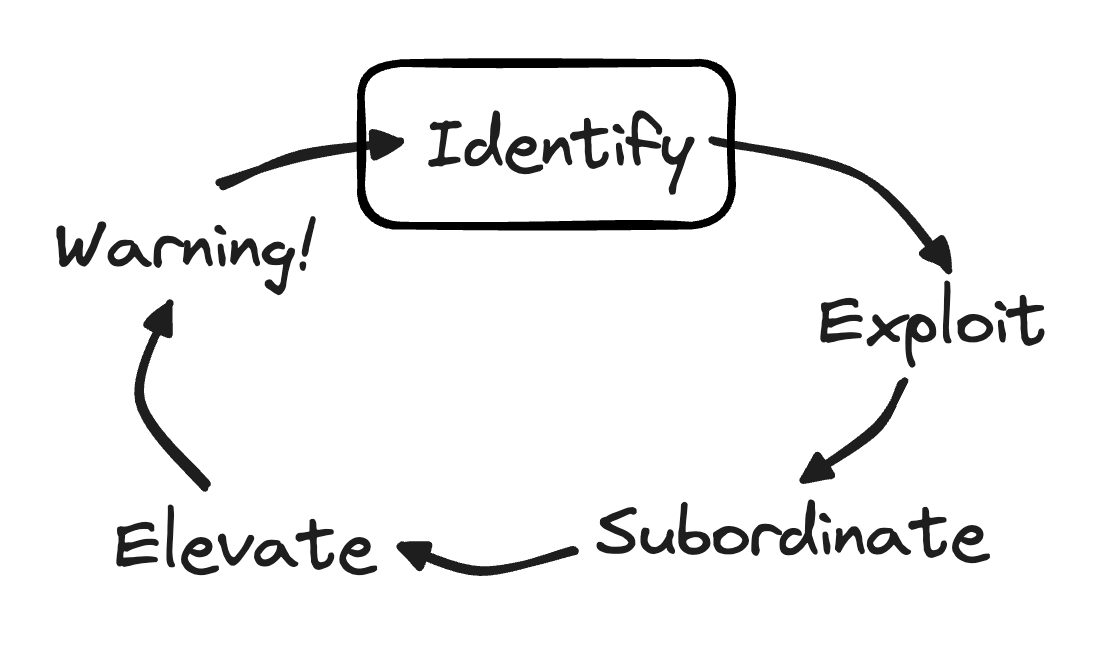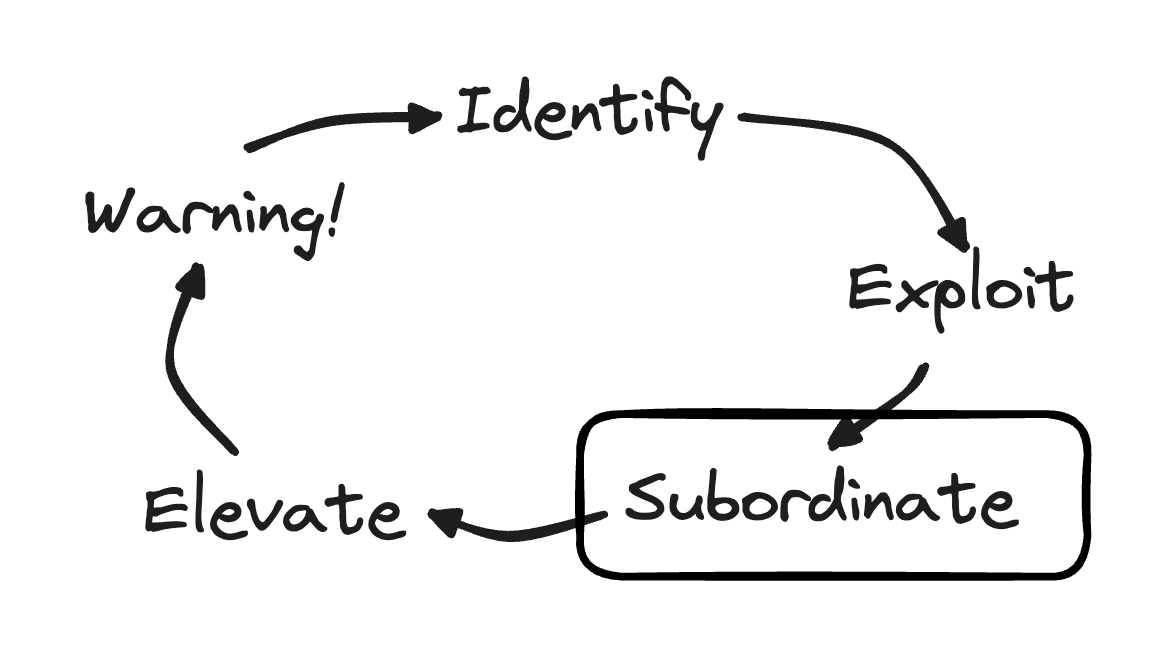Decide How to Exploit the System's Constraint

Get the most out of what you currently have
Exploit means to squeeze the maximum out of. Alternatively, it means to not waste any.
You want to get 100% out of the Constraint you currently have, but, it is very likely that you are not getting 100% out of it. Also, be aware that it may not be obvious that there is more to get out of the Constraint until you try. How can you make sure you don't waste what comes through the Constraint?
So, before proceeding further, here is where we identify how to be more efficient with the Constraint. We are not focusing on changing the Constraint in this step. We are looking for ways to live with the Constraint, to make the most of it, and to waste the least of it.
Constraint is the part of the system that is the most limiting for the flow of value through the system. If we followed this definition in identifying the Constraint, then it means that if we manage to squeeze more out of the Constraint, the entire system will deliver more value. We found our point of leverage, now is the time to decide how to take action at our point of leverage.
Operational knowledge required
Deciding how to Exploit the Constraint requires operational knowledge of your system. This note is here to point out the boundary between strategy and operations that we find ourselves on. Strategy got you to the point of Exploiting this particular Constraint. How you will Exploit it depends on what actions you can take in your specific operational context.
It is very easy to attempt to Elevate the Constraint, but resist the urge. First, ensure that you Exploit the current Constraint. Don't worry, Elevating the Constraint will come in step four.
Need help? Schedule a free 30min session
If at any point you feel like the guide is unclear or otherwise unable to help you, schedule a 30 minute session to get help. Your experience and feedback will help improve this guide for you and others.
If the Constraint is with the User
Consider the User Constraint scenario from the Tea Shop example.

There are plenty Tea Drinkers aware of our Tea Shop, but not enough of them come to the Tea Shop (thus becoming Tea Drinkers in our Tea Shop).
What does Exploiting the Constraint look like in this case?
Here, we would want to make sure that we get the maximum out of every Tea Drinker in our Tea Shop. Saying this differently, we don't want to waste any visit of a Tea Drinker in our Tea Shop. We would want to ensure that everyone leaves with a cup of Tea. We would also want to ensure they come back in the future. This leads us down the path of things like good customer service, maybe not having to wait in line. Maybe there are additional items we can sell with the Tea to improve the flow of value. Perhaps we include conveniences like allowing for takeout with to-go cups as well as providing lids and stoppers to prevent spillage.
The important observation to make here is that all of the above ideas assume that the Constraint is unchanged.
If the Constraint is with the User Need
Consider the User Need Constraint scenario from the Tea Shop example.

Not enough Tea Shop visitors during off hours are interested in regular sized tea (Off Hours Tea Regular).
What does Exploiting the Constraint look like in this case? Note that for a User Need, the difference between Exploit and Elevate is tricky, as any action we take may indirectly impact the actual need. Nevertheless, focus on what can be done without attempting to impact the User Need directly.
We could offer a discount on Off Hours Tea Regular. We could offer an exclusive flavor that's only offered in regular size. We could offer a combo package to include regular sized tea with something else. We could arrange the product and train staff to make regular sized tea more prominent and appealing.
If the Constraint is with the Component
Consider the Component Constraint scenario from the Tea Shop example.

The Constraint is the time it takes for our Kettle to boil the Water.
Exploiting the Constraint when it is a Component is usually more straightforward than a User or User Need Constraint.
To get the most out of Kettle, to Exploit it, we would want to make sure that 100% of the time the Kettle is boiling water. We may even want to get started boiling water before the Tea Shop opens so that there is Hot Water available for first customer through the door.
Alternatively, being the Tea experts that we are, we know that serving Tea with boiling water is not optimal, and we may want to instead have pre-boiled or otherwise potable water that the Kettle only warms to required temperature, thus shortening the total time required per water volume. Our Kettle is still the Constraint, but we now have ideas for utilizing it more efficiently.
What about all the non-Constraints?
Once we start Exploiting the Constraint, it becomes readily apparent that utilizing the Constraint to the maximum (thus minimizing waste) is dependent on non-Constraints being able to supply the inputs that the Constraint uses or consumes. The non-Constraints also need to be ready to accept any output that hte Constraint generates. We proceed to Subordinate Everything Else to the Above Decision Step.

Go back
Identify the System Constraint
Learn how to identify and add detail to the system Constraint in your Value Chain. Follow a step-by-step process to pinpoint a clear and actionable Constraint, using the Tea Shop example as a reference.

Up next
Subordinate Everything Else to the Above Decision
Learn to subordinate all non-constraints to the primary constraint in your value chain. This guide helps identify relevant non-constraints and ensure efficient flow of value through the system.
